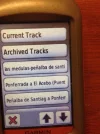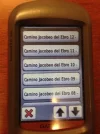The Ruta del Ebro is high on my list for 2016, and since I'll likely be walking alone, I am going to try once again to make friends with my GPS. The only GPS tracks I've seen for the route are on this website: http://www.mapacaminosantiago.es/jacobeoebro/01-deltebre-santcarlesdelarapita.htm
What I can't figure out is how to transfer the tracks from the web to my computer (basecamp) so I can then get them to my GPS. Hoping one of you GPS experts can help with this. Thanks, Laurie
What I can't figure out is how to transfer the tracks from the web to my computer (basecamp) so I can then get them to my GPS. Hoping one of you GPS experts can help with this. Thanks, Laurie






















